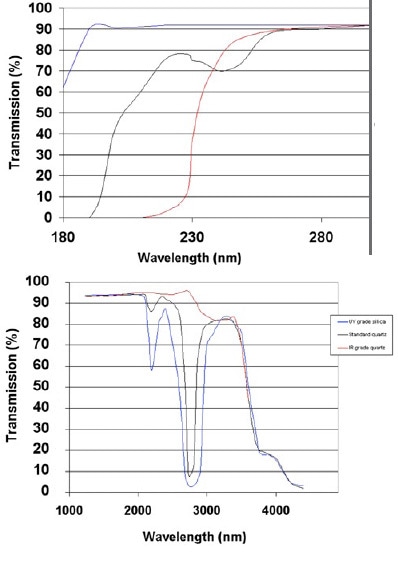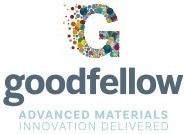Background
Goodfellow Ceramic & Glass Division are an award-winning company who supply specialist glass and ceramics for scientific and industrial use.
Goodfellow Ceramic & Glass Division aim is to understand your application and then supply the most appropriate materials or components to meet your needs.
Our technical staff are qualified in glass technology and materials science and can, therefore, provide impartial advice and full technical support for your projects.
Quartz Glass
Quartz glass is an extremely versatile material used in a range of different applications. It has outstanding thermal properties, excellent optical transmission, with good electrical and corrosion performance.
Production of Fused Silica or Quartz Glass
There are two basic ways of making quartz / silica glass:
- By melting silica grains either by gas or electrical heating (the type of heating affects some optical properties). This material can be transparent or, for some applications, opaque.
- By synthesising the glass from chemicals
The Difference between Fused Silica and Quartz Glass
This synthetic material, normally referred to as synthetic fused silica, has better optical properties and is somewhat more expensive than the other type.
In the UK, terms such as quartz, silica, fused quartz and fused silica tend to be used interchangeably. In the USA, quartz refers to material melted from grains, silica refers to the synthetic material.
Advantages of Fused Silica/Quartz Glass
The advantages of fused silica or quartz glass include:
- Incredibly thermally shock resistant (can be taken from red heat and plunged into water without cracking)
- Low coefficient of thermal expansion
- Optical transmission properties from ultra violet to infra red
- Good chemical resistance
- Excellent electrical insulator
Applications of Fused Silica/Quartz Glass
Applications Applications of fused silica/quartz glass include:
- Windows
- Lenses
- Mirror substrates
- Crucibles, trays and boats
- UV transmitting optics (synthetic fused silica)
- IR transmitting optics
- Metrology components
Properties of Fused Silica/Quartz Glass
Table 1. Typical properties of fused silica/quartz glass.
| |
Property |
Units
|
Value
|
| General |
Chemical Formula |
n/a
|
SiO2
|
| Density |
g/cm3
|
2.23
|
| Mechanical |
Design Tensile Strength |
MPa
|
48
|
| Design Compressive strength |
MPa
|
1100
|
| Young's Modulus |
GPa
|
72
|
| Thermal |
Max. Use Temperature |
°C
|
950-1300
|
| Thermal Conductivity |
W/m.K
|
1.4
|
| Co-Efficient of Linear Expansion |
10-6/°C
|
0.55
|
| Electrical |
Volume Resistance |
Ù.cm
|
1016
|
| Dielectric Constant |
|
3.7
|
| Dielectric Strength |
kV/mm
|
40
|

Figure 1. Transmission curve for 10mm thick fused silica/quartz glass (including surface reflection losses).
Properties of fused silica/quartz glass shown are typical values, they are not absolute material properties, and should be used for guidance only. It is recommended that materials and components are tested for their suitability for a specific application.

This information has been sourced, reviewed and adapted from materials provided by Goodfellow Ceramic & Glass Division.
For more information on this source, please visit Goodfellow Ceramic & Glass Division.